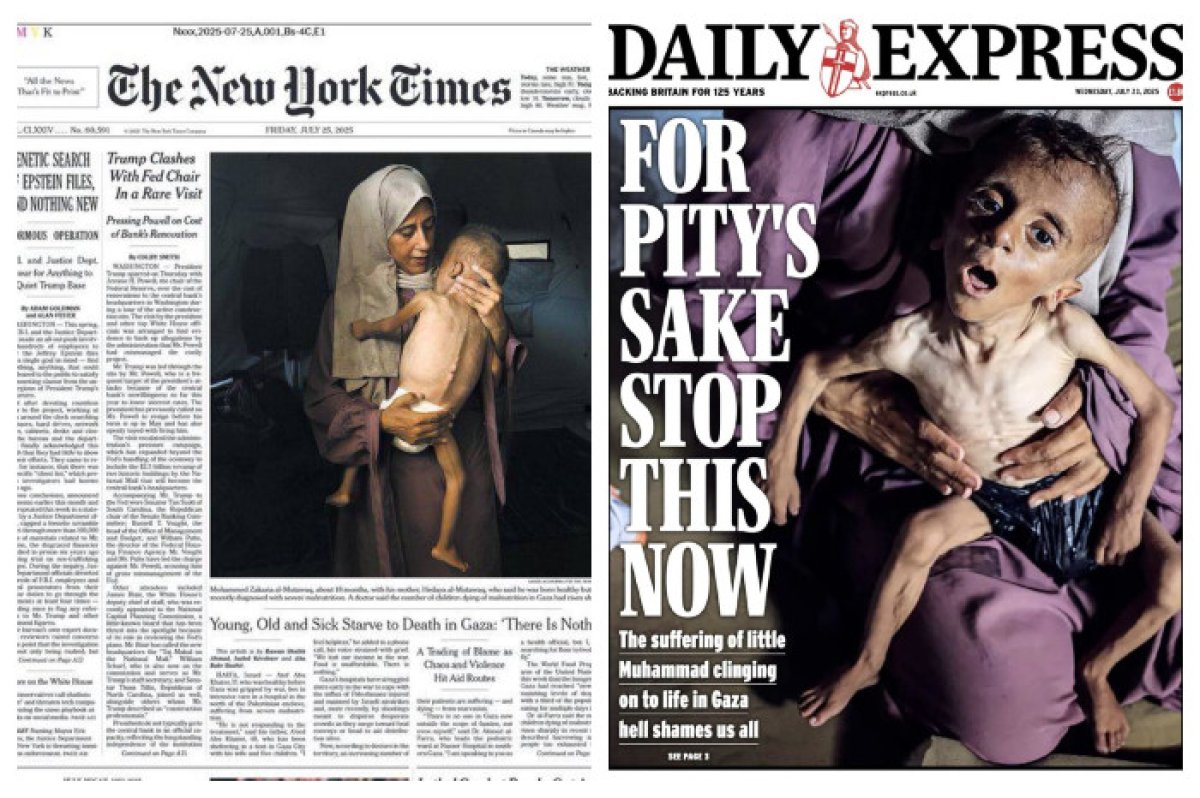A picture is worth 1,000 words?
When stories are told in fragments, when facts are blurred by urgency or agenda, entire peoples are reduced to caricatures.
By Sarah N. Stern
JNS
Aug 5, 2025

The New York Times printed an emotionally gripping photo on July 25 of an 18-month-old, emaciated Gazan child, every bone of his spinal cord showing through his paper-like, frail skin. The implicit allegation was that Israel is deliberately starving children. The problem was that this child was born with a pre-existing congenital defect, cerebral palsy. The photo’s original caption says, “He was born healthy.”
Within hours, almost every major outlet was using the image to tell the same story. Sky News, CNN, The Guardian, Daily Mail, The New York Times and The Times in London all ran with it, reinforcing the message: Gaza is gripped by mass starvation, Israel is the culpable party, and this image is the proof.
Five days later, after that impression had been cemented into the minds of millions of people, The New York Times issued a scarcely read tweet, or “Editor’s Note,” saying:
An article about people in Gaza suffering from malnutrition and starvation after nearly two years of war with Israel lacked information about Mohammed Zakaria al-Mutawaq, a child suffering from severe malnutrition and whose photo was featured prominently in the article. After publication of the article, The Times learned from his doctor that Mohammed also had pre-existing health problems. Had the “Times” known the information before publication, it would have been included in the article and the picture caption.
They then proceed to gloat about how “our reporters and photographers continue to report from Gaza, bravely, sensitively and at personal risk, so that the readers can see firsthand the consequences of war.”
Let’s investigate further “the consequences of war.”
Who invaded homes in Israel, murdering 1,200 people, including nearly 400 young people attending the Nova music festival; burned entire kibbutz communities; killing entire families; raped men and women, and beheaded children; and dragged 251 hostages into Gaza?
It was Hamas. It was Palestinian Islamic Jihad. It was the Popular Front for the Liberation of Palestine. It was regular Arab citizens, just coming along for the ride.
Why have the photos of Hamas stealing trucks of humanitarian assistance not been shown on the front pages of The New York Times, shooting rifles in the air, not caring enough about the lives of their own to see where their bullets land? Apparently, life to these terrorists is meaningless.
Why were civilians on the streets of Gaza applauding as raped and barely alive hostages were dragged through the streets on Oct. 7?
And what about 24-year-old Evyatar David? What about his emaciated frame of a body via video recently released by the terrorists? He is alone, starving, for nearly two years, in a miserable, dark tunnel. Why does The New York Times not run his photo on the front page?
The power of the media to shape perception—for better or for worse—cannot be underestimated; a single image or headline, stripped of context, can ignite outrage, inflame bias or evoke misplaced sympathy. Corrections and clarifications, though necessary, often arrive too late, overshadowed by the emotional resonance of the initial narrative.
What, then, are the true consequences of war? They are measured not only in shattered lives and grieving families, but in the erosion of truth itself. When stories are told in fragments, when facts are blurred by urgency or agenda, entire peoples are reduced to caricatures. More than that, any hopes for understanding recede ever further. The people of Gaza, of Israel and all those caught in the crossfire pay the real price.
It is incumbent upon all who bear witness—journalists, readers and leaders alike—to seek out the tangled realities beneath the surface, to honor the nuance, and to remember that every statistic and story hides a human soul longing for a normal life.
No comments:
Post a Comment